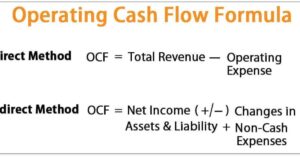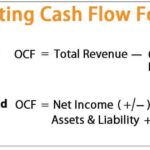Cash flow is often referred to as the lifeblood of any business, yet many entrepreneurs and managers overlook its importance. Unlike profit, which can be an abstract concept calculated through accounting principles, cash flow represents the actual movement of money in and out of a business. Understanding cash flow is vital for maintaining business operations, planning for the future, and ensuring long-term success.
What is Cash Flow in Simple Terms?
The concept of cash flow might sound complex, but it’s simple when broken down. The cash flow of a business refers to the movement of money in and out of the company over a specific period. It includes all cash transactions, such as sales revenue coming in (cash inflow) and expenses like rent, utilities, and payroll going out (cash outflow). Cash flow is what allows a business to pay its bills and invest in future growth. Without sufficient cash flow, even a profitable company can face difficulties.
Does Cash Flow Mean Profit?
It’s easy to confuse cash flow with profit, but they’re not the same. Profit is the money left over after all expenses have been deducted from revenue, whereas cash flow reflects the actual cash that moves in and out of the business. For instance, a business might report a profit on its income statement but still experience cash flow problems if its customers are slow to pay their invoices. Conversely, a business with strong cash flow may not be profitable if its expenses exceed its revenue. It’s important to monitor both cash flow and profitability to maintain a healthy financial position.
What is Cash Flow for Dummies?
To explain cash flow in the simplest terms, imagine a personal bank account. When you receive your paycheck, that’s cash inflow. When you pay bills, that’s cash outflow. If you have more money coming in than going out, your cash flow is positive. If you’re spending more than you’re earning, your cash flow is negative. Businesses work the same way, but on a larger scale. Understanding where your money is coming from and where it’s going is essential for making informed decisions.
The Importance of Cash Flow in Business
The importance of cash flow cannot be overstated. It’s not just about having enough money to cover your day-to-day operations, but also about being able to invest in growth opportunities. For example, if a business wants to expand, launch a new product, or hire more staff, it needs cash on hand to make those investments. Without healthy cash flow, a business may miss out on opportunities, struggle to pay its bills, or even face bankruptcy.
Types of Cash Flow
There are three main types of cash flow that every business should track: operating cash flow, investing cash flow, and financing cash flow. Operating cash flow represents the cash generated from the business’s core operations, like sales and services. Investing cash flow refers to cash spent on or received from investments in assets, such as purchasing equipment or selling property. Financing cash flow involves transactions related to borrowing or repaying debt and issuing or buying back shares. Monitoring all three types gives a complete picture of a company’s financial health.
How to Improve Cash Flow
Improving cash flow requires both strategic planning and careful management. One common method is to speed up receivables, ensuring that customers pay their invoices promptly. Another strategy is to negotiate longer payment terms with suppliers to keep cash on hand longer. Reducing unnecessary expenses and selling off unneeded assets can also boost cash flow. Regularly reviewing cash flow statements can help business owners identify problems early and take corrective actions before they escalate.
What Can Cash Flow Tell You?
Cash flow offers valuable insights into a company’s financial health and operational efficiency. Positive cash flow indicates that a business is generating enough cash to cover its expenses and invest in future growth. Negative cash flow, on the other hand, can signal trouble, especially if it persists over time. By analyzing cash flow trends, business owners can identify potential problems, such as declining sales, rising costs, or inefficiencies in their operations. Cash flow analysis can also reveal opportunities for growth and expansion.
Cash Flow vs. Profit: Why Both Matter
While profit and cash flow are distinct concepts, both are important for the financial health of a business. Profitability shows whether a business is generating more revenue than it’s spending, while cash flow reveals whether the business has enough cash on hand to meet its obligations. A profitable business can still run into trouble if it doesn’t have enough cash to cover its bills, and a business with strong cash flow can still fail if it’s not profitable. Monitoring both metrics is essential for long-term success.
The Role of Cash Flow in Financial Planning
Cash flow plays a crucial role in financial planning. By projecting future cash flow, businesses can plan for expenses, investments, and growth opportunities. Cash flow projections help business owners anticipate periods of tight cash and take proactive steps to avoid cash shortages. They also provide a basis for budgeting and setting financial goals. Without accurate cash flow projections, businesses may find themselves unprepared for unexpected expenses or unable to seize opportunities when they arise.
How to Track Cash Flow
Tracking cash flow involves regularly reviewing your cash flow statement, which summarizes the cash inflows and outflows over a specific period. The cash flow statement is divided into three sections: operating, investing, and financing activities. By analyzing these sections, you can see where your money is coming from, where it’s going, and whether your cash flow is positive or negative. Many businesses use accounting software to automate cash flow tracking and generate detailed reports.
Common Cash Flow Challenges
Every business faces cash flow challenges at some point. Common issues include late payments from customers, unexpected expenses, seasonal fluctuations in sales, and rising costs. These challenges can strain a business’s cash flow and make it difficult to meet financial obligations. To overcome these challenges, businesses need to be proactive in managing their cash flow, such as by maintaining a cash reserve, negotiating better payment terms with suppliers, and closely monitoring expenses.
The Impact of Poor Cash Flow Management
Poor cash flow management can have serious consequences for a business. It can lead to missed payments, damaged relationships with suppliers, and even bankruptcy. Businesses with poor cash flow management may also find it difficult to secure financing, as lenders and investors look for strong cash flow as a sign of financial stability. To avoid these pitfalls, businesses need to prioritize cash flow management and take steps to ensure they have enough cash on hand to meet their obligations.
Tools for Cash Flow Management
There are many tools available to help businesses manage their cash flow. Accounting software, such as QuickBooks or Xero, can automate cash flow tracking and generate detailed reports. Cash flow forecasting tools can help businesses project their future cash flow and plan accordingly. Some businesses also use cash flow management services, which provide expert advice and support in managing cash flow. By using these tools, businesses can gain better control over their cash flow and avoid cash shortages.
Cash Flow and Growth Opportunities
Healthy cash flow is essential for pursuing growth opportunities. Whether it’s expanding into new markets, launching new products, or investing in new technology, businesses need cash on hand to fund these initiatives. Without sufficient cash flow, businesses may miss out on opportunities for growth and expansion. By managing cash flow effectively, businesses can ensure they have the resources they need to pursue growth and achieve their long-term goals.
What is a Cash Flow Statement?
A cash flow statement is a financial document that summarizes the cash inflows and outflows over a specific period. It provides a detailed breakdown of the business’s operating, investing, and financing activities. The cash flow statement is an essential tool for tracking cash flow and understanding a business’s financial health. By regularly reviewing the cash flow statement, business owners can identify trends, spot potential problems, and make informed decisions about their business’s future.
Frequently Asked Questions
1. What is the difference between cash flow and profit?
Cash flow refers to the actual movement of money in and out of a business, while profit is the money left over after all expenses have been deducted from revenue. A business can be profitable but still experience cash flow problems if it doesn’t manage its cash properly.
2. How can I improve my business’s cash flow?
You can improve your cash flow by speeding up receivables, negotiating longer payment terms with suppliers, reducing unnecessary expenses, and regularly reviewing your cash flow statement to identify problems early.
3. Why is cash flow important for business growth?
Cash flow is essential for business growth because it provides the funds needed to invest in new opportunities, such as expanding into new markets or launching new products. Without sufficient cash flow, businesses may miss out on growth opportunities.
4. What are the three types of cash flow?
The three types of cash flow are operating cash flow (generated from the business’s core operations), investing cash flow (related to investments in assets), and financing cash flow (involving transactions related to borrowing or repaying debt).
Conclusion
The significance of cash flow in any business cannot be understated. It’s the very foundation upon which businesses operate, make strategic decisions, and pursue growth opportunities. While profit may be the ultimate goal, cash flow is the day-to-day reality that enables a business to thrive. By understanding, managing, and improving cash flow, business owners can ensure their businesses remain financially healthy and poised for long-term success.

Milton is a seasoned financial strategist who shares expert insights and practical tips on mastering cash flow to help you achieve financial stability and growth.











